Tattoos have been around for centuries even millennia. These intricate marking, designed with patterns, pictures and legends are made by puncturing the skin and in the process, inserting and leaving indelible pigments beneath it.
Since time the memorial before the arrival of the West, tattoos have covered the bodies of our ancestors. The Spaniards named them "Pintados" which meant painted.
The named tattoo believe to have come from the word tatow. It is also known as tatu, tatau, tataou which all mean to strike or to stamp.
Deep in the heart of the northern mountains, tattoos cover both skin and culture of the Kalingas (One of Philippines Tribe).
Seventeen hours north from Manila (Philippines) lies the village of Buscalan. Here lives one of its elders, who still practice the ancient ways of her people, chief among them, the art of tattooing.
Tucked deep on the mountains, the Kalinga Traditions of tattooing lives on through her.
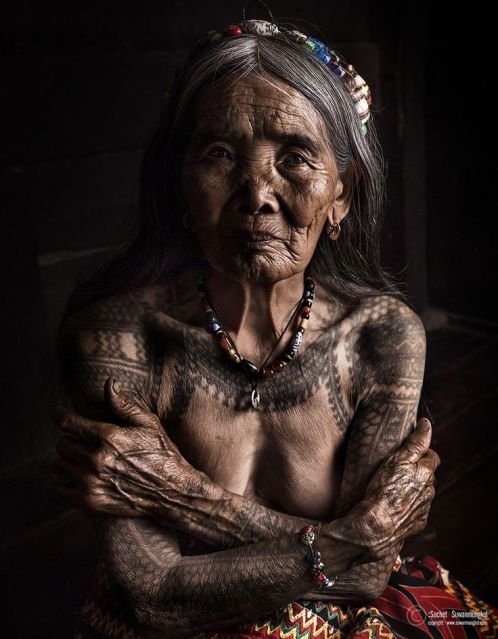
Whang-od, a woman in her 90's dedicated her life to the art of Batok, the traditional Kalinga tattoos. She known as a mambabatok, a Kalinga tattoo artist.
Each village used to have at least one tattoo artist. Now, she is the only one in the tribe who still carries this practice.
The prevalent designs for the tattoos done among the Kalinga females are the fern, centipede, flowing river, rice terraces and the mat. Their tattoos were once considered as upper garments as they go about bare-breasted with the tattoos. The Kalinga women also have tattoos called snorkray which appear like sleeves of theirs garments. The young men and women of Kalinga once saw themselves as ambaru or beautiful when they have body tattoos.
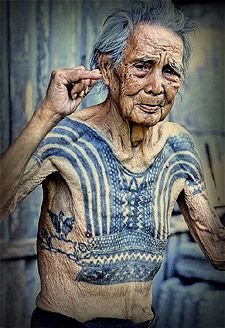
Those without tattoos were once perceived as unattractive, weak and different and are thereby regarded as bad omens for the community.
The tattooing process starts by drawing the design with a piece of straw. Soot with mixed of water, is used to make the ink or merieka. An orange torn is attached to a piece of bamboo laced with ink on its tip. A short stick is used to push the bamboo in order to force the thorn to prick and break the skin.
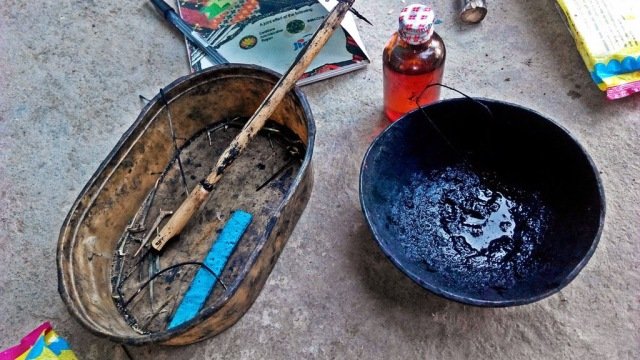
This tattooing tool is called lukfan. This hand-tapped method pierces the skin at approximately 90 to 120 taps per minute.
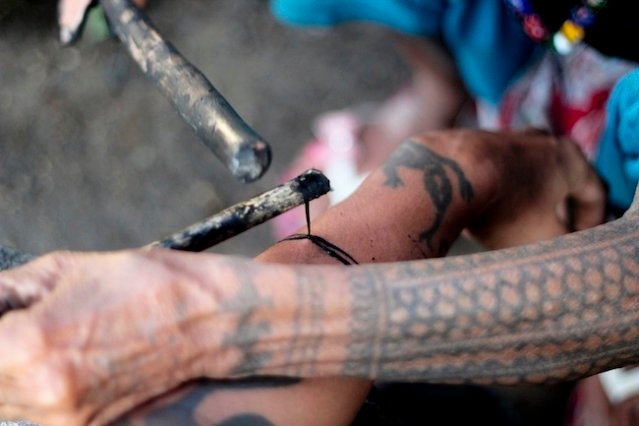
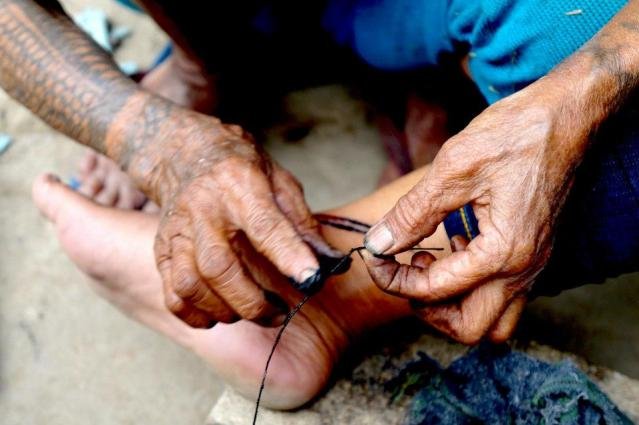
For the Kalingas, tattoos are symbols of one's rite of passage. As they go from one stage of their lives to the next journey is marked by the tattoos on their bodies. These rites are categorized into three stages, rites of separation, rites of transition and rites of incorporation.
- Separation signify the removal of a Kalinga from the community. An example of this is a funeral.
- Transition signify the isolation of a Kalinga before he or she moves into the next stage in life, such as a betrothal and pregnancy.
- Incorporation signify the return of the person to the society in his or her new status in life, as shown by marriage.
Also, Kalingas believe that changes in the status of a person can cause disruptions in the society. These disruptions are believed to cause misfortunes.
The art and tradition of tattoos and tattooing are deemed necessary to counter such disturbances.
Tattooing was once done by a mambabatok for the head-hunting and head-taking expeditions. This is a solemn rite of transition signifying the complete departure of a Kalinga male from childhood to adulthood. For both men and women of the Kalinga, traditional tattoos were also done for protection, serving as a sort of talisman against all sorts of evils like enemies, diseases, famine and misfortune.
For the older's Kalingas, tattoos depicting powerful beasts, esoteric patterns and religious formulas are believed to give strength and invulnerability especially during combat and warfare.
Batok, traditional art of tattooing of the Kalinga, is truly treasure. Tattoos for Kalingas not only cover and adorn their bodies but wrap and envelope their entire culture with each prick of the needle. Having gone through this journey up north this humble traveler has experienced Batok in a new light.
I could see and feel how absolutely proud they are of their skill and their art.
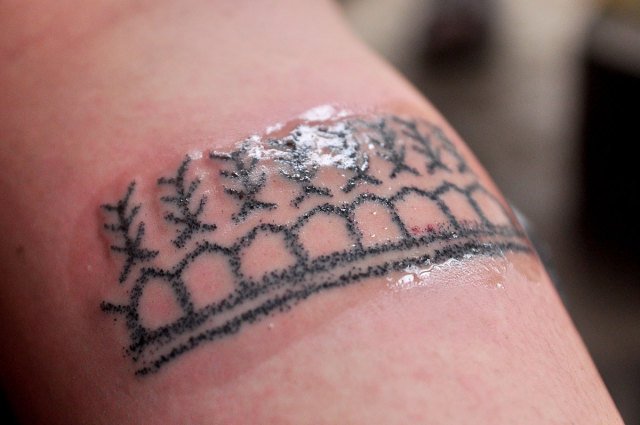
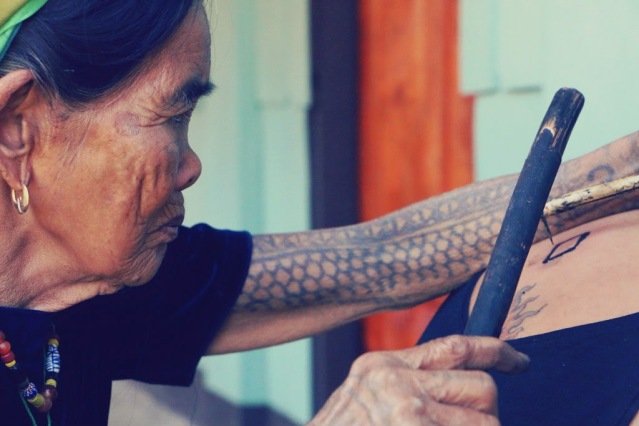
However, I could also feel this prevalent fear among them that Batok is in danger. Its importance is slowly fading away among the Kalingas themselves, as the younger generations have seemingly neglected this important aspect of their culture. Nevertheless, Whang-od and the others are also quite happy and hopeful, because Batok has also gained new-found life, through the individuals who make journey up north.
Through each snap of the lens, each roll of the film and each word written and spoken about them. Wang-od and the others believe that Batok will continue to live on.

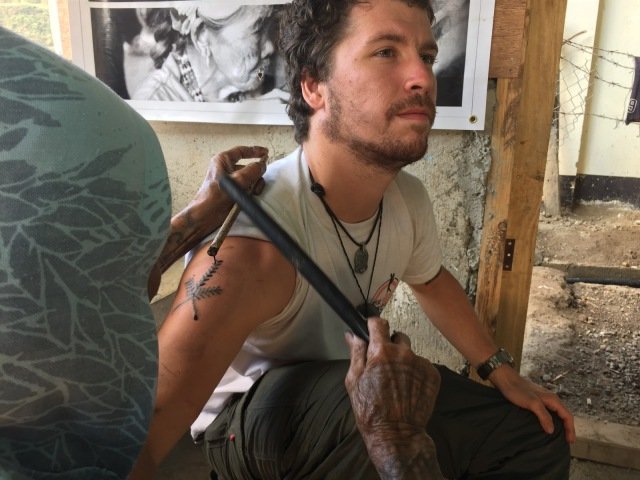
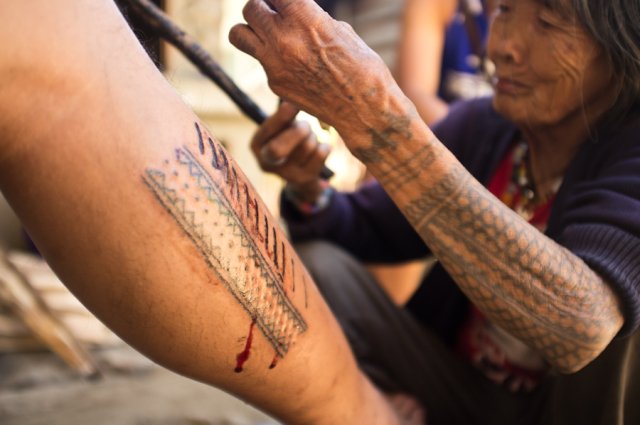
Image Source:
Very interesting . Thanks for the post!
Downvoting a post can decrease pending rewards and make it less visible. Common reasons:
Submit
Whang-od is the only and the last tattoo artist that using that method of tattooing.
Downvoting a post can decrease pending rewards and make it less visible. Common reasons:
Submit
I met her, 2 times and how she perform the way of kalingas tattooing. Was Awesome......
Downvoting a post can decrease pending rewards and make it less visible. Common reasons:
Submit